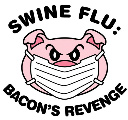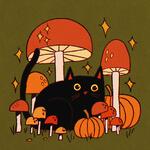Posted by Stewie
Whats the deal with them anyway?!
|
Bees are flying insects closely related to wasps and ants. Bees are a monophyletic lineage within the superfamily Apoidea, presently classified by the unranked taxon name Anthophila. There are nearly 20,000 known species of bee, in nine recognized families, though many are undescribed and the actual number is probably higher. They are found on every continent except Antarctica, in every habitat on the planet that contains insect-pollinated flowering plants.
Bees are adapted for feeding on nectar and pollen, the former primarily as an energy source, and the latter primarily for protein and other nutrients. Most pollen is used as food for larvae.
Bees have a long proboscis (a complex "tongue") that enables them to obtain the nectar from flowers. They have antennae almost universally made up of 13 segments in males and twelve in females, as is typical for the superfamily. Bees all have two pairs of wings, the hind pair being the smaller of the two; in a very few species, one sex or caste has relatively short wings that make flight difficult or impossible, but none is wingless.
The smallest bee is the dwarf bee (Trigona minima), about 2.1 mm (5/64") long. The largest bee in the world is Megachile pluto, which can grow to a size of 39 mm (1.5"). Member of the family Halictidae, or sweat bees, are the most common type of bee in the Northern Hemisphere, though they are small and often mistaken for wasps or flies.
The best-known bee species is the Western honey bee, which, as its name suggests, produces honey, as do a few other types of bee. Human management of this species is known as beekeeping or apiculture.
Bees are the favorite meal of Merops apiaster, the bee-eater bird. Other common predators are kingbirds, mockingbirds, bee wolves, and dragonflies.
Bees play an important role in pollinating flowering plants, and are the major type of pollinator in ecosystems that contain flowering plants. Bees either focus on gathering nectar or on gathering pollen depending on demand, especially in social species. Bees gathering nectar may accomplish pollination, but bees that are deliberately gathering pollen are more efficient pollinators. It is estimated that one third of the human food supply depends on insect pollination, most of which is accomplished by bees, especially the domesticated Western honey bee. Contract pollination has overtaken the role of honey production for beekeepers in many countries. Monoculture and the massive decline of many bee species (both wild and domesticated) have increasingly caused honey bee keepers to become migratory so that bees can be concentrated in seasonally-varying high-demand areas of pollination.
Most bees are fuzzy and carry an electrostatic charge, which aids in the adherence of pollen. Female bees periodically stop foraging and groom themselves to pack the pollen into the scopa, which is on the legs in most bees, and on the ventral abdomen on others, and modified into specialized pollen baskets on the legs of honey bees and their relatives. Many bees are opportunistic foragers, and will gather pollen from a variety of plants, while others are oligolectic, gathering pollen from only one or a few types of plant. A small number of plants produce nutritious floral oils rather than pollen, which are gathered and used by oligolectic bees. One small subgroup of stingless bees, called "vulture bees," is specialized to feed on carrion, and these are the only bees that do not use plant products as food. Pollen and nectar are usually combined together to form a "provision mass", which is often soupy, but can be firm. It is formed into various shapes (typically spheroid), and stored in a small chamber (a "cell"), with the egg deposited on the mass. The cell is typically sealed after the egg is laid, and the adult and larva never interact directly (a system called "mass provisioning").
Visiting flowers can be a dangerous occupation. Many assassin bugs and crab spiders hide in flowers to capture unwary bees. Other bees are lost to birds in flight. Insecticides used on blooming plants kill many bees, both by direct poisoning and by contamination of their food supply. A honey bee queen may lay 2000 eggs per day during spring buildup, but she also must lay 1000 to 1500 eggs per day during the foraging season, mostly to replace daily casualties, most of which are workers dying of old age. Among solitary and primitively social bees, however, lifetime reproduction is among the lowest of all insects, as it is common for females of such species to produce fewer than 25 offspring.
The population value of bees depends partly on the individual efficiency of the bees, but also on the population itself. Thus, while bumblebees have been found to be about ten times more efficient pollinators on cucurbits, the total efficiency of a colony of honey bees is much greater, due to greater numbers. Likewise, during early spring orchard blossoms, bumblebee populations are limited to only a few queens, and thus are not significant pollinators of early fruit.
Recently, managed populations of western honey bees have experienced substantial declines. This has prompted investigations into the phenomenon amidst great concern over the nature and extent of the losses. One aspect of the problem is believed to be "Colony Collapse Disorder" but many of the losses outside the US are attributed to other causes. Pesticides used to treat seeds, such as Clothianidin and Imidacloprid, may also negatively impact honey bee populations. Other species of bees such as mason bees are increasingly cultured and used to meet the agricultural pollination need.[citation needed] Most native pollinators are solitary bees, which often survive in refuge in wild areas away from agricultural spraying, but may still be poisoned in massive spray programs for mosquitoes, gypsy moths, or other insect pests.
Bees, like ants, are a specialized form of wasp. The ancestors of bees were wasps in the family Crabronidae, and therefore predators of other insects. The switch from insect prey to pollen may have resulted from the consumption of prey insects that were flower visitors and were partially covered with pollen when they were fed to the wasp larvae. This same evolutionary scenario has also occurred within the vespoid wasps, where the group known as "pollen wasps" also evolved from predatory ancestors. Up until recently the oldest non-compression bee fossil had been Cretotrigona prisca in New Jersey amber and of Cretaceous age, a meliponine. A recently reported bee fossil, of the genus Melittosphex, is considered "an extinct lineage of pollen-collecting Apoidea sister to the modern bees", and dates from the early Cretaceous (~100 mya). Derived features of its morphology ("apomorphies") place it clearly within the bees, but it retains two unmodified ancestral traits ("plesiomorphies") of the legs (two mid-tibial spurs, and a slender hind basitarsus), indicative of its transitional status.
The earliest animal-pollinated flowers were pollinated by insects such as beetles, so the syndrome of insect pollination was well established before bees first appeared. The novelty is that bees are specialized as pollination agents, with behavioral and physical modifications that specifically enhance pollination, and are generally more efficient at the task than beetles, flies, butterflies, pollen wasps, or any other pollinating insect. The appearance of such floral specialists is believed to have driven the adaptive radiation of the angiosperms, and, in turn, the bees themselves.
Among living bee groups, the Dasypodaidae are now considered to be the most "primitive", and sister taxon to the remainder of the bees, contrary to earlier hypotheses that the "short-tongued" bee family Colletidae was the basal group of bees; the short, wasp-like mouthparts of colletids are the result of convergent evolution, rather than indicative of a plesiomorphic condition
Bees may be solitary or may live in various types of communities. The most advanced of these are eusocial colonies found among the honey bees, bumblebees, and stingless bees. Sociality, of several different types, is believed to have evolved separately many times within the bees.
In some species, groups of cohabiting females may be sisters, and if there is a division of labor within the group, then they are considered semisocial.
If, in addition to a division of labor, the group consists of a mother and her daughters, then the group is called eusocial. The mother is considered the "queen" and the daughters are "workers". These castes may be purely behavioral alternatives, in which case the system is considered "primitively eusocial" (similar to many paper wasps), and if the castes are morphologically discrete, then the system is "highly eusocial".
There are many more species of primitively eusocial bees than highly eusocial bees, but they have rarely been studied. The biology of most such species is almost completely unknown. The vast majority are in the family Halictidae, or "sweat bees". Colonies are typically small, with a dozen or fewer workers, on average. The only physical difference between queens and workers is average size, if they differ at all. Most species have a single season colony cycle, even in the tropics, and only mated females (future queens, or "gynes") hibernate (called diapause). A few species have long active seasons and attain colony sizes in the hundreds. The orchid bees include a number of primitively eusocial species with similar biology. Certain species of allodapine bees (relatives of carpenter bees) also have primitively eusocial colonies, with unusual levels of interaction between the adult bees and the developing brood. This is "progressive provisioning"; a larva's food is supplied gradually as it develops. This system is also seen in honey bees and some bumblebees.
Highly eusocial bees live in colonies. Each colony has a single queen, many workers and, at certain stages in the colony cycle, drones. When humans provide the nest, it is called a hive. A honey bee hive can contain up to 40,000 bees at their annual peak, which occurs in the spring, but usually have fewer.


















 Very educational.
Very educational.